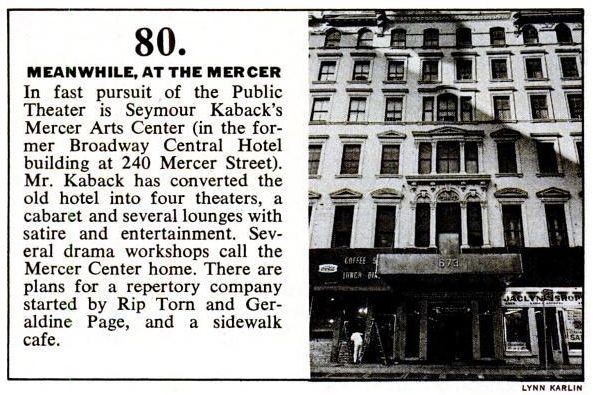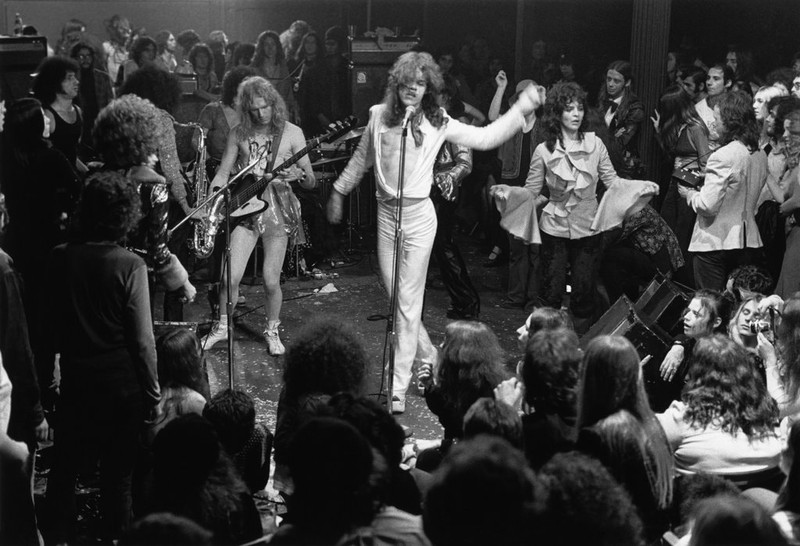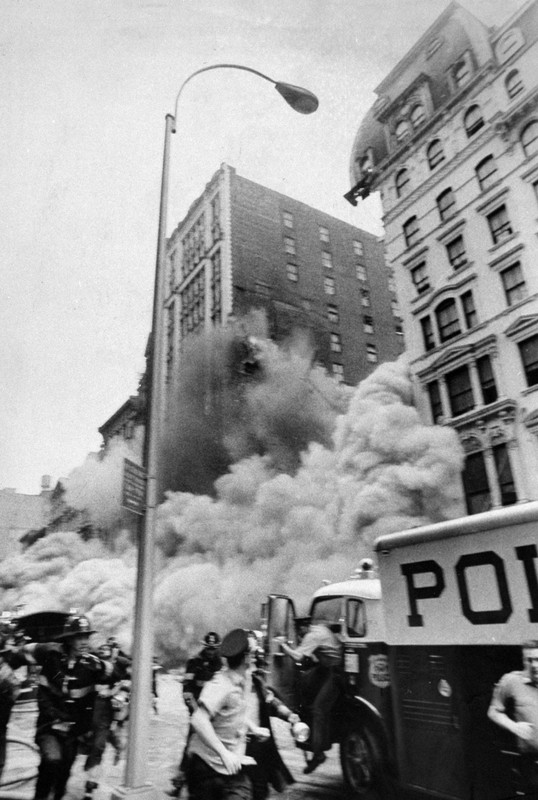Site of the Mercer Arts Center, 1971-1973 (now NYU's Hayden Hall)
Introduction
Text-to-speech Audio
Images
The Mercer Arts Center

The New York Dolls performing at the center

The collapse of the University Hotel

Backstory and Context
Text-to-speech Audio
Before CBGB became synonymous with New York's punk scene, the Mercer Arts Center showcased what would become some of the country's most influential punk bands. An ambitious combination of theaters, music venues, lounges, and a cabaret, the Mercer Arts Center existed for less than three years, but helped usher in some of the most important music acts of the early 1970s.
The center was located in the former University Hotel, which was originally the Grand Central Hotel. At the time of its construction in 1870, the Grand Central Hotel was reportedly the largest and one of the grandest hotels in the country. But by the 1960s, the hotel, like much of New York City, had fallen into disrepair. By 1972, it was operating as a welfare hotel and in the space of the first half of that year, was the site of a homicide, 49 burglaries, 22 robberies, and 18 drug-related crimes.
Art D'Lugoff, club promoter and owner of the Village Gate, saw an opportunity in the grimy flophouse. The Village Gate opened in 1958 and hosted some of the most famous names in jazz, and D'Lugoff was confident he could be equally successful in creating a kind of hybrid theater/music venue/cabaret in a gritty section of downtown, where the city's art scene was already migrating.
D'Lugoff bought the first two floors of the University Hotel and spent $500,000 refurbishing the space. The main floor housed the Mercer Hansberry Theater and the Mercer Brecht. The second floor housed rehearsal space and four cabaret theaters. The center was designed to show off-Broadway productions, experimental theater, poetry readings, and theater classes. The center held its grand opening in December of 1971, but the upper floors of the former hotel remained derelict and populated with vagrants and drug users.
The center's Blue Room Theater quickly became the nexus of a growing fringe music movement. Some of the earliest performers at the center were the New York Dolls, the Modern Lovers, and Suicide. The center attracted celebrity clientele, as well, including Elton John and Andy Warhol, a fixture at many of the most popular downtown clubs.
Despite the renovations to the two bottom floors, the bulk of the building, which also faced Broadway, was a crumbling, dilapidated building. Cracks regularly appeared in the walls of the center and the walls on the Broadway side sagged. On the afternoon of August 3, 1973, bricks began falling inside the building and attempts were made to reach an engineer, to no avail. At 5PM, the building was evacuated, only ten minutes before the Broadway side of the building collapsed. A show was scheduled for twenty minutes later, and roughly two hundred people escaped the building just before its collapse. The remains of four people were found in the rubble of the hotel. Though the center itself was largely undamaged in the collapse, the city declared the site unsafe and ordered the demolition of the entire building.
Today, the site is home to Hayden Hall, a residence hall on the campus of New York University.
Sources
McGrath , Garrett. The Theater Came Crashing Down , Narratively. Accessed September 7th 2020. https://narratively.com/the-theater-came-crashing-down/.
Gent, George . Mercer Arts Center Rises from Rubble , New York Times . August 7th 1973. Accessed September 7th 2020. https://www.nytimes.com/1973/08/07/archives/mercer-arts-center-rises-from-rubble-plans-to-reopen.html.
Sokol, Tony . Real Vinyl History: The Mercer Arts Center Collapsed 43 Years Ago Today , Den of Geek . August 3rd 2016. Accessed September 7th 2020. https://www.denofgeek.com/culture/real-vinyl-history-the-mercer-arts-center-collapsed-43-years-ago-today/.
Bonanos , Christopher . That Huge Building Collapse on HBO's Vinyl? True Story. Mostly., Vulture . February 14th 2016. Accessed September 7th 2020. https://www.vulture.com/2016/02/vinyl-mercer-arts-center-collapse-backstory.html.
